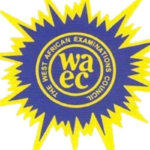2024/2025 WAEC GCE FINANCIAL ACCOUNTING OBJ AND ESSAY EXPO | ACCOUNTING QUESTIONS AND ANSWERS VERIFIED

F/acct-Obj
1-10: DBCABBCBDA
11-20: BBBDBABDDA
21-30: BDBABBBCCC
31-40: ADADBDBAAC
41-50: DAABAACABB
1a)
(i) Direct Allocation:
Overheads are directly allocated to various
departments on the basis of expenses for
each
department respectively. Examples are:
overtime
premium of workers engaged in a particular
department, power (when separate meters are
available), jobbing repairs etc.
(ii) Direct Labour/Machine Hours:
Under this basis, the overhead expenses are
distributed to various departments in the ratio
of
total number of labour or machine hours
worked
in each department. Majority of general
overhead items are apportioned on this basis.
(iii) Value of Materials Passing
through Cost Centres:
This basis is adopted for expenses associated
with material such as material handling
expenses.
(iv) Direct Wages:
According to this basis, expenses are
distributed
amongst the departments in the ratio of direct
wages bills of the various departments. This
method is used only for those items of
expenses
which are booked with the amounts of wages,
e.g., workers’ insurance, their contribution to
provident fund, workers’ compensation etc.
(v) Number of Workers:
The total number of workers working in each
department is taken as a basis for
apportioning
overhead expenses amongst departments.
Where the expenditure depends more on the
number of employees than on wages bill or
number of labour hours, this method is used.
This method is used for the apportionment of
certain expenses as welfare and recreation
expenses, medical expenses, time keeping,
supervision etc.
1b)
(a) Individual result of each department can be
known which helps to compare the performances
among all the departments, i.e., the trading
results can be compared.
(b) Departmental accounts help to understand or
locate the success, failure, rates of profit, etc.
(c) It helps the management to make proper
plan of action, policies in order to increase profit
after analysing the results of operation of various
departments.
(d) Departmental accounting helps us to
understand which department should be
expanded further or which one should be closed
down as per the results of the operation.
(e) If also helps to encourage a healthy
competitive spirit among the various departments
which, ultimately, helps to increase profits of the
firm as a whole.
==========================
(3a)
Single entry accounting system records each accounting transaction with a single entry to the accounting records, rather than the vastly more widespread double entry system. The single entry system is centered on the results of a business that are reported in the income statement
(3b)
(i)improper knowledge: The mechanism of keeping incomplete records is due to improper knowledge of accounting principles.
(ii) Inexpensive: This method is less expensive as compared to keeping records as per double entry system.
(iii)Time Saving: This method is time saving in the sense that only a few records are maintained under such system.
(iv) Convenient: This method is very convenient in the sense that no rules and principles are to be followed.
(v) Highly Flexible:This mechanism is not based on any set rules, principles and accounting standards, as such it can be modified and changed as per the need and availability of time.
(vi) Convenient: This method is very convenient in the sense that no rules and principles are to be followed
=====================================
(4ai)
partnership is an arrangement where parties, known as business partners, agree to cooperate to advance their mutual interests.
(4aii)
partnership deed is a document that outlines in detail the rights and responsibilities of all parties to a business operation. In other words It has the force of law and is designed to guide the partners in the conduct of the business.
(4b)
(i)The name of the firm
(ii)Name and details of all partners
(iii)Date of commencement of business
(iv)Duration of the firm’s existence
(v)Capital contributed by each partner
=================
Categories: Waec Gce


